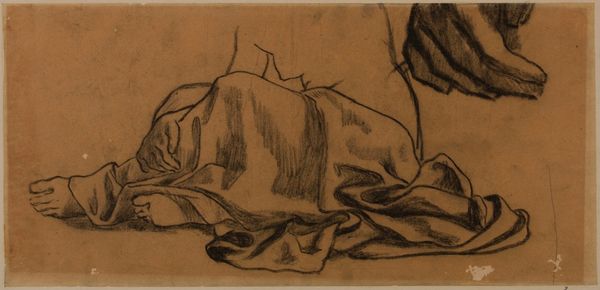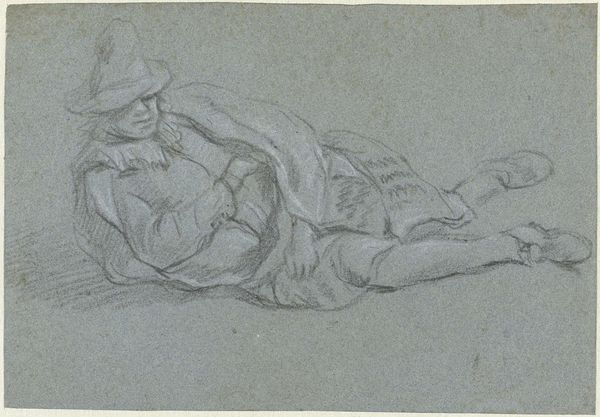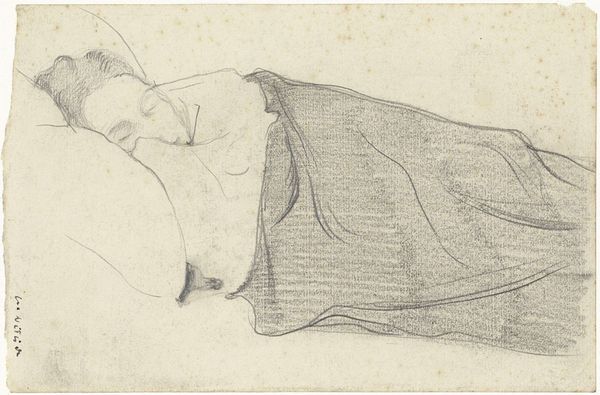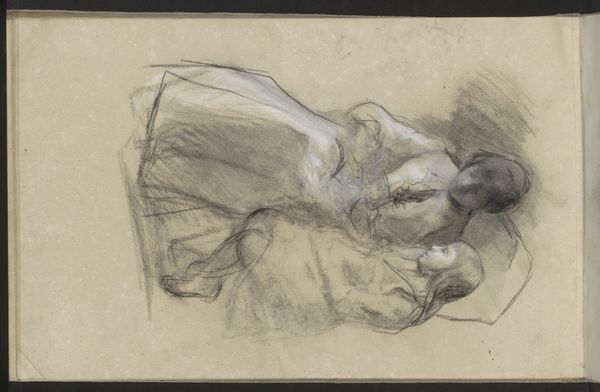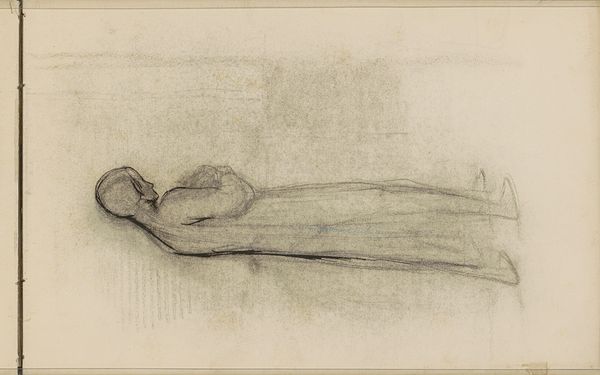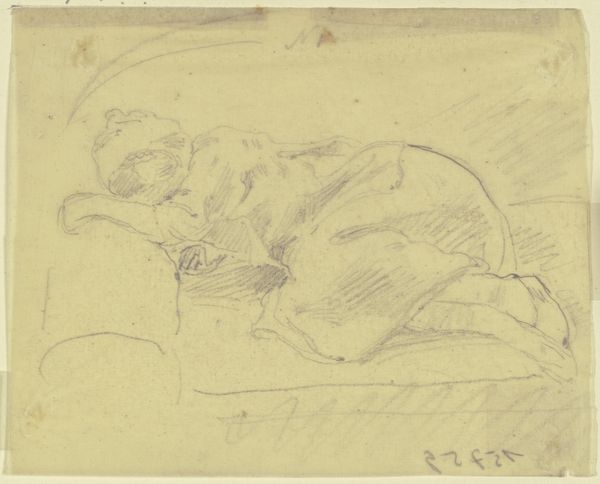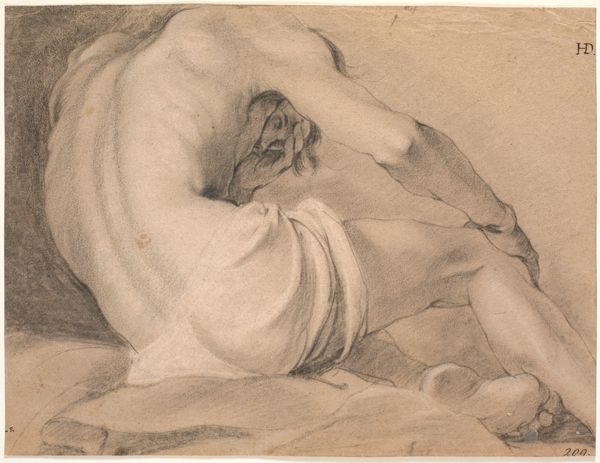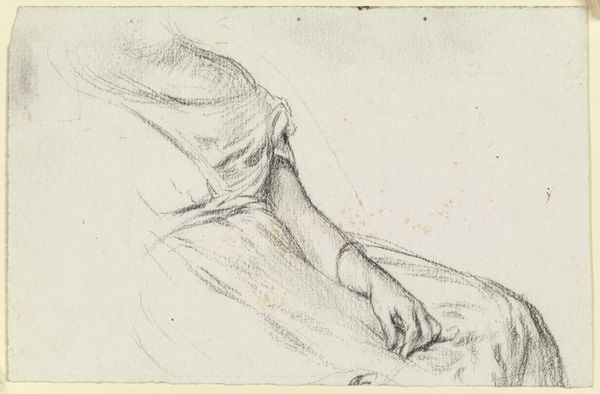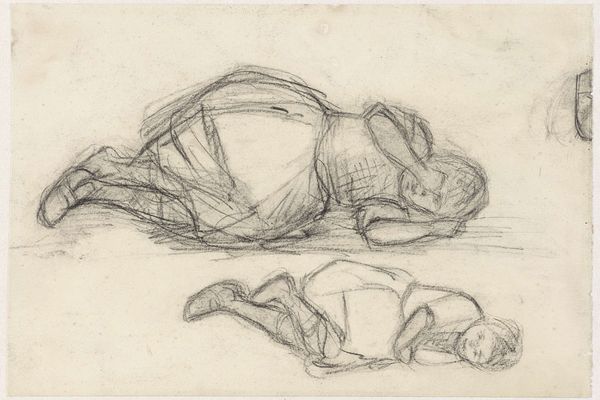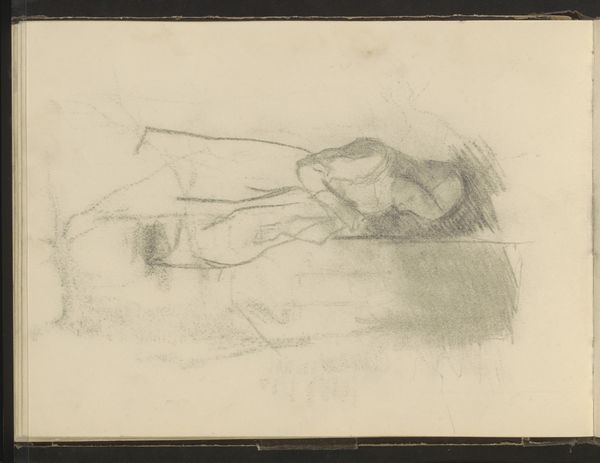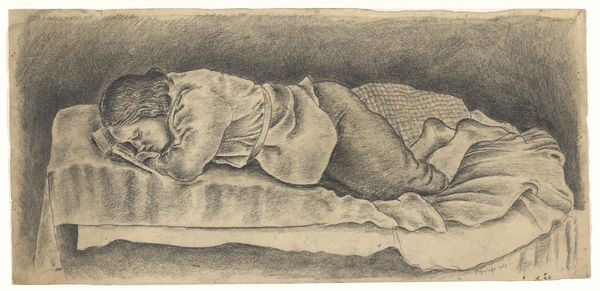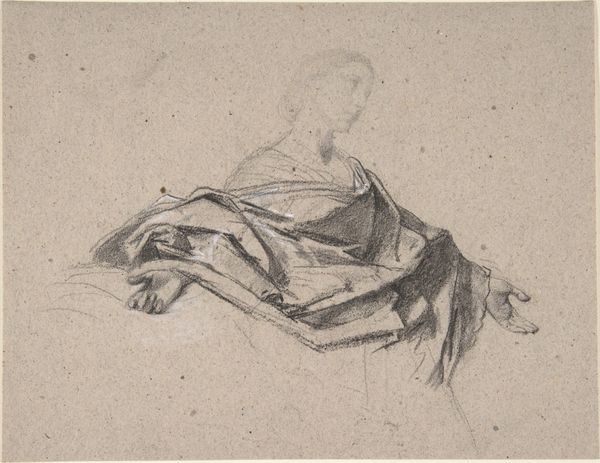
Dimensions: 150 × 230 mm
Copyright: Public Domain
Editor: This is "Study of a Sleeping Woman" by Pierre Puvis de Chavannes, created around 1867. It's a charcoal and pastel drawing on paper, and I'm struck by its quiet intimacy. It almost feels voyeuristic, observing someone so vulnerable in sleep. What stands out to you? Curator: Well, placing it within the context of 19th-century art, we see this kind of intimate study emerges alongside larger debates about academic art versus the avant-garde. Puvis de Chavannes, though admired by many avant-garde artists, maintained a foot in both camps. How do you think this tension might manifest in this work? Editor: I see it in the sort of…idealized realism? The pose is natural, yet the figure possesses this smooth, almost sculptural quality that reminds me of classical nudes. Curator: Precisely! This idealized naturalism speaks to the complex position of the nude in art at the time. Public display of the nude was a contentious issue. Works like this often served as studies for larger, publicly-displayed paintings with allegorical or historical themes that 'justified' the nudity. Knowing that, does it change how you see it? Editor: It does! Knowing it might be a study makes it seem less about the individual woman and more about a broader ideal. It almost feels like a statement on the role of women at that time. Submissive, asleep and vulnerable in plain sight. Curator: That’s an astute observation. Think about how images circulated then, too – the role of academies, salons, and even early photography in shaping perceptions and legitimizing certain representations. Puvis de Chavannes’ work engages with, and arguably reinforces, some of those conventions. What do you think about how accessible it is now, when compared to its creation? Editor: I guess its power to affect people might have diminished through time. Nowadays we don’t see nudes on artworks as controversial as they used to be back then, and with its displacement from its context it is a beautiful study nonetheless. Curator: Exactly. Context truly reshapes perception, doesn’t it? Editor: Definitely. I'm walking away with a whole new appreciation for how historical context shapes our understanding of art!
Comments
No comments
Be the first to comment and join the conversation on the ultimate creative platform.
